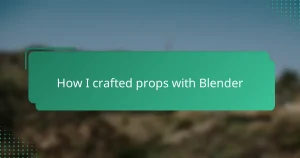Key takeaways
- Science fiction props combine creativity and technology, enhancing storytelling and immersion in futuristic worlds.
- Mastering model animation involves understanding rigging, timing, and techniques like keyframe and skeletal animation for realistic movements.
- Effective use of tools and plugins, such as Control Rig and Live Link, significantly improves animation efficiency in Unreal Engine.
- Attention to detail during setup, troubleshooting, and iterative testing is essential for creating believable, dynamic animations that engage users.

Introduction to Science Fiction Props
Science fiction props have always fascinated me because they blend imagination with practical design. They’re not just cool objects; they tell stories and build entire worlds. Have you ever held a prop and felt instantly transported to a distant galaxy or a future era?
Creating these props requires a deep understanding of both technology and creativity. The details—the lights, textures, and moving parts—make all the difference. I remember the thrill of discovering how a simple LED could bring a prop to life, making it feel real and believable.
What’s truly amazing is how science fiction props inspire us to think beyond our current reality. They challenge our imagination and push the boundaries of what’s possible. Isn’t that why we’re drawn to sci-fi in the first place? It shows us new worlds, new futures, and invites us to explore them, even if only through the props we create.
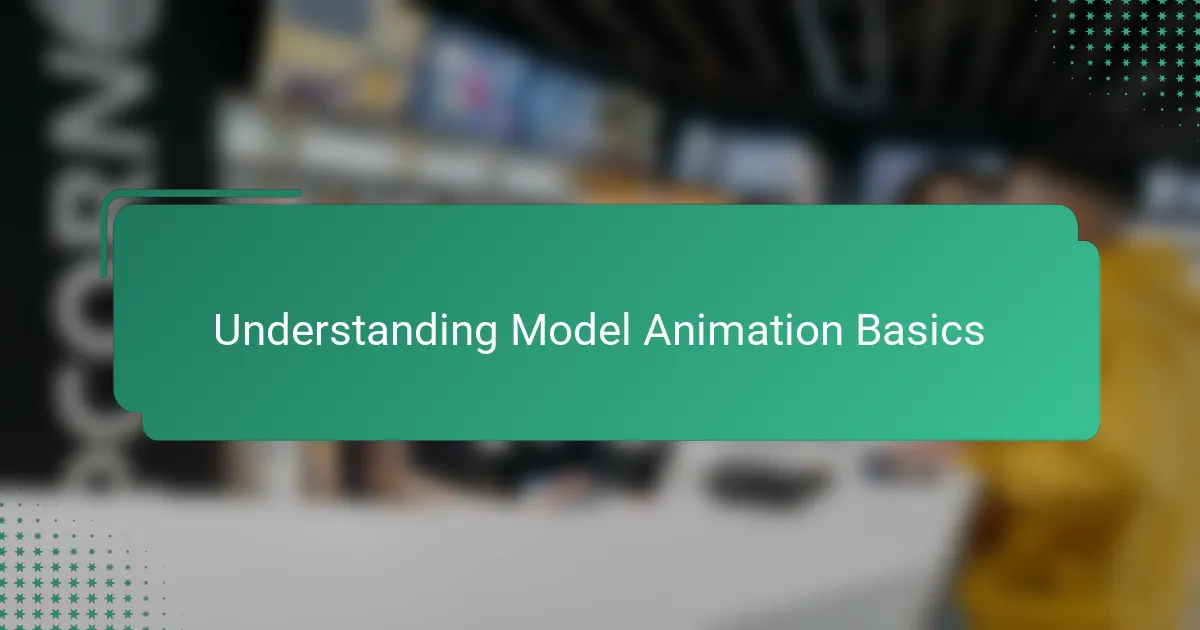
Understanding Model Animation Basics
Animation, at its core, is about bringing static models to life. I always found it fascinating how a series of carefully crafted movements can transform a rigid shape into something that feels alive and purposeful. Have you ever wondered what makes a sci-fi robot’s arm move so fluidly or how a futuristic helmet tilts just right? That’s the magic of understanding model animation basics.
One key aspect I learned early on is the importance of rigging—the process of creating a skeleton that controls the model’s movements. Without a proper rig, the animations feel stiff or unnatural. I recall my first attempt, where a simple error in rigging caused a mech’s leg to bend the wrong way, teaching me that even small mistakes can break the illusion.
Animation also relies heavily on timing and control. It’s not just about making something move but about making it move convincingly. When I crafted the opening scene for a sci-fi drone prop, tweaking the speed and flow of its wing flaps made all the difference between a clunky machine and a believable piece of futuristic tech. Have you noticed how subtle shifts in movement can tell a whole story without a single word? That’s the beauty of animation fundamentals.

Setting Up Models in Unreal Engine
Setting up models in Unreal Engine was a bit daunting at first, but I quickly realized that organizing everything properly makes all the difference. I make sure to import my sci-fi props with the correct scale and orientation—nothing ruins immersion like a floating laser gun or a robot arm pointing sideways. Have you ever spent hours troubleshooting only to find out your model was flipped upside down? That frustration taught me to double-check these basics every single time.
Once the model is imported, the next crucial step is assigning materials and collision meshes. I learned early on that without accurate collision, animations can feel disconnected—like when a mech’s foot slides through the floor. Adding simple collision shapes not only fixes this but also helps me test interactions before diving into complex animation layers. It’s a little detail that brings the virtual world closer to reality.
Next up is creating blueprint setups for the models. I customize these blueprints to handle different animation states and responses, such as toggling lights or moving parts. I remember the first time I saw my sci-fi turret respond flawlessly to player commands—it was a mix of relief and excitement. Isn’t it satisfying when technical preparation finally pays off in a smooth, responsive animation? Those moments keep me hooked on working inside Unreal Engine.
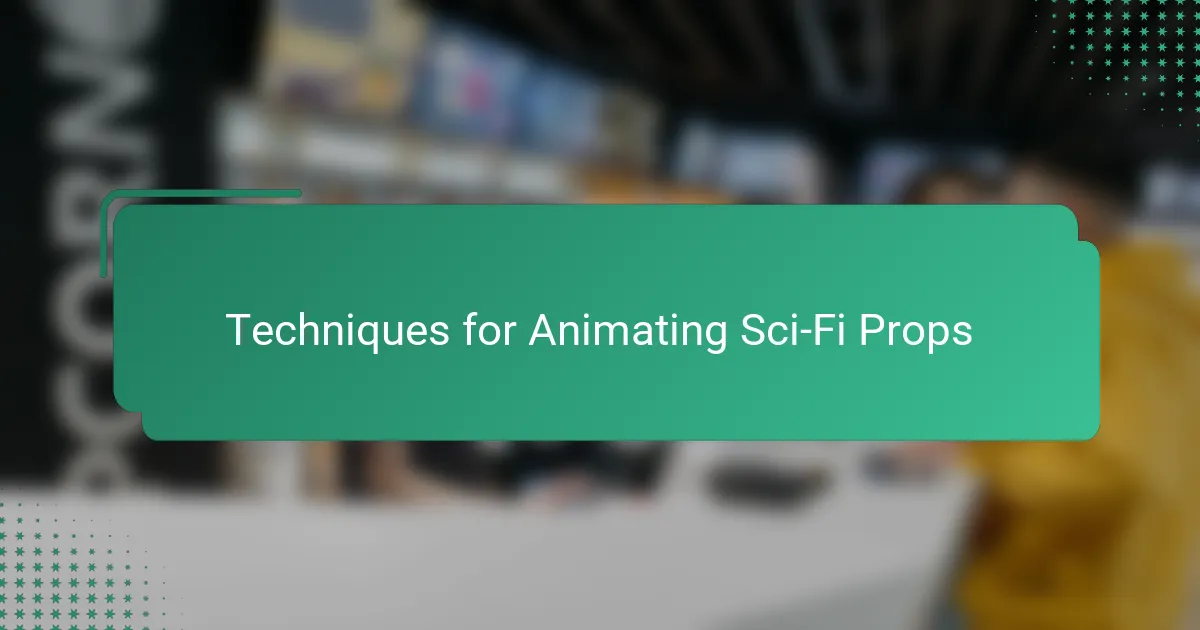
Techniques for Animating Sci-Fi Props
Animating sci-fi props in Unreal Engine often starts with mastering key techniques like keyframe animation and procedural motion. I’ve found that using keyframes lets me precisely choreograph movements, which is essential when I want a robot arm to move with mechanical precision. Have you ever noticed how even the slightest tweak in timing can make something feel either clunky or elegantly futuristic?
Another technique I rely on is skeletal animation, where rigging the model properly unlocks realistic joint movement. I can’t count the times I’ve had to rework a rig after seeing my drone’s wings behave awkwardly—those moments taught me patience and the importance of anticipating how parts will move together. It’s like giving life to what was once just a static mesh.
Sometimes, I turn to animation blueprints in Unreal Engine to add dynamic responses, like blinking lights or shifting panels, depending on gameplay or environment triggers. It’s thrilling to see a prop respond interactively, not just move on a loop. Have you experienced that satisfying feeling when your sci-fi turret reacts instantly to a player’s command? It’s proof that good animation techniques turn models into immersive, living elements of a game world.

Tools and Plugins for Efficiency
Efficiency in animating models within Unreal Engine greatly improved for me once I started using specialized plugins like Control Rig and Sequencer. These tools let me create complex animations more intuitively and with less manual keyframing. Have you ever spent hours trying to perfect motion curves, only to discover a plugin that streamlines the entire process? That feels like striking gold.
Another plugin that became indispensable is Live Link, which syncs real-time animation data between different software and Unreal Engine. I remember the first time I saw my motion capture setup update live inside the engine—it was surreal and instantly boosted my workflow. Using tools like this means fewer delays and more time to focus on creative polish.
Beyond plugins, I also rely heavily on automation scripts that handle repetitive tasks like batch importing and material assignment. Automating these mundane steps freed me from tedious routines and kept my focus where it matters—on crafting the perfect sci-fi prop animation. Isn’t it amazing how small efficiencies add up to big leaps in productivity?
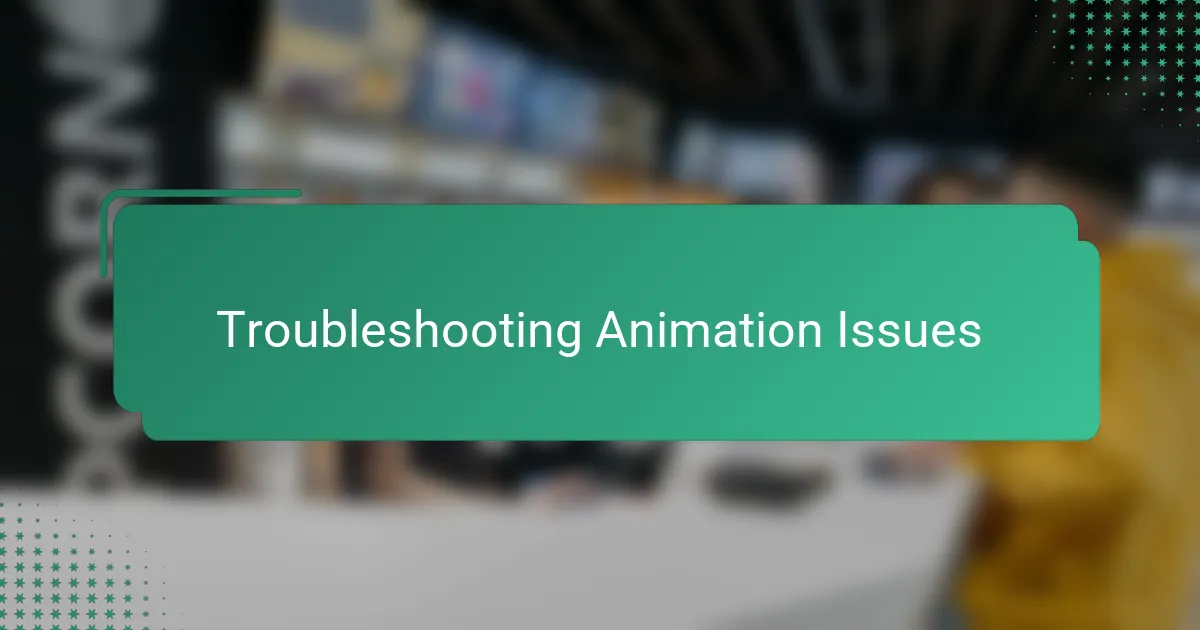
Troubleshooting Animation Issues
One issue I often faced early on was animations not playing as expected because the skeletons didn’t match between the model and the animation asset. It frustrated me to see my carefully crafted robot arm twitch oddly, but I learned that double-checking bone hierarchies and naming conventions can save hours of headaches. Have you ever stared at an animation preview, wondering why your mech’s hand doesn’t follow through properly? It’s usually a subtle rig mismatch lurking beneath the surface.
Sometimes, animations will play but look jittery or unnaturally fast—a problem I encountered when I overlooked the frame rate settings in Unreal Engine. Adjusting the animation’s playback speed or ensuring the imported sequence matches the project’s timing made all the difference. I recall a moment when a sci-fi drone’s wing flap went from robotic stutter to smooth gliding just by tweaking these simple parameters. Small changes like this remind me how critical attention to detail is in animation.
Lastly, blend spaces and animation states can cause unexpected issues when transitions behave oddly or animations snap abruptly. Early on, I struggled with a turret’s rotating parts snapping back instead of flowing naturally, and it taught me to test transitions thoroughly and fine-tune blend weights. Have you noticed how even the slightest mismatch in animation blending breaks immersion? Taking time to smooth these transitions turns functional animation into believable movement that pulls players into the sci-fi world.
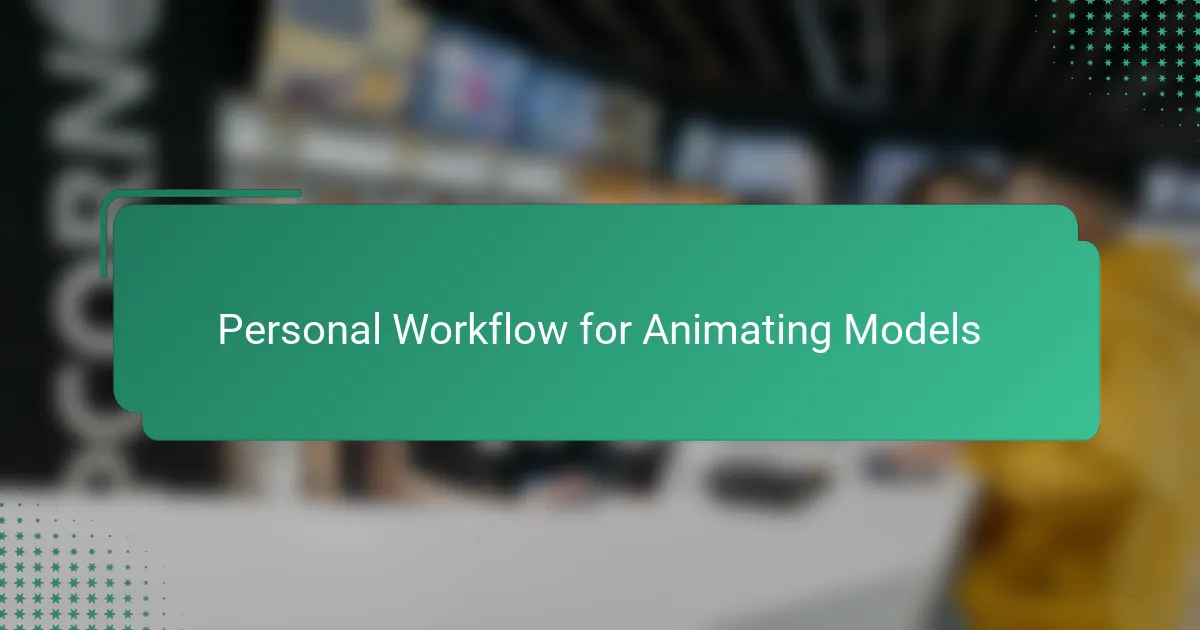
Personal Workflow for Animating Models
When I animate models in Unreal Engine, my workflow always starts with a clear plan. I sketch out the key movements I want the prop to perform, breaking them down into manageable chunks before jumping into the software. Have you ever felt overwhelmed by trying to animate everything at once? I have, and organizing that initial vision saves me countless hours of frustration later on.
Once the plan is set, I focus heavily on cleaning up the rig and making sure every joint behaves exactly as it should. It’s like tuning an instrument before a concert — if the rig isn’t precise, the animation will sound off. I remember one project where a simple misaligned bone caused my sci-fi drone’s wing to twitch unexpectedly, which was maddening but taught me the value of patience and thoroughness.
Finally, I rely a lot on iterative testing inside Unreal Engine itself. Seeing the animation play in context reveals nuances I never catch in isolation. Adjusting timing or easing transitions feels a bit like giving the model a personality; it’s deeply satisfying to watch a once lifeless prop respond fluidly and convincingly. Have you ever had that moment when your sci-fi creation suddenly feels real? That’s why refining animations personally is so rewarding.

